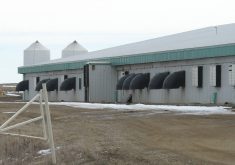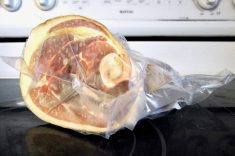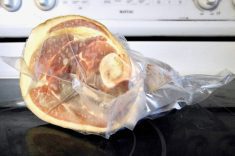When we talk about the passing of 2022, the most common response I hear is “good riddance.”
It was a year of uncertainty. We saw disruptions to supply chains and reverberations from COVID-19. The war in Ukraine impacted markets and African swine fever jolted traditional supply and demand.
Will 2023 be any better? Many of the market disruptors from last year will continue. However, this year, we can see these uncertainties in advance and mitigate some of the associated risks.
Read Also

Introducing the purple tomato
Health Canada has approved bioengineered The Purple Tomato (TM), maybe leading to new culinary uses and health benefits?
The war in Ukraine will continue to cause significant disruption, resulting in high feed prices and price instability. What will the price of corn or soybean meal be in six months? If someone gives you firm answers to these questions, don’t believe them. Accurate prediction is challenging under current market conditions.
Impacts of COVID-19 continue to introduce volatility. As a result of the pandemic, we shifted from a logistics system that was “just in time” to one that is “just in case.” This philosophy increases the cost of inputs and pushes up the cost of getting pork to market.
There are also significant economic factors building uncertainty into the global demand for pork. Rising inflation, especially for food, will impact pork demand. The scale of those impacts is still an open question. Interest rate uncertainty and exchange rate volatility add to the inflation landscape.
There are other market impacts to consider. To what degree has China recovered from ASF and what will this mean for their pork demand? What about other ASF-impacted countries like Vietnam and the Philippines?
What will happen to European production in light of ASF pressure, escalating feed costs and restricted feed availability driven by the war in Ukraine?
Disease will continue to be a significant production risk in the year ahead. Will porcine epidemic diarrhea be an issue? Will porcine reproductive and respiratory syndrome enter Canada in a substantive way? Are there other diseases we should pay attention to?
Economics has been called the dismal science. It’s not hard to see why when reading this introduction to 2023, but the outlook is far from gloomy. The positive hog prices we see coming into the New Year have support.
Pork consumption, both at home and abroad, remains strong. Pork supply is tight internationally, with European production slipping, U.S. hog numbers on a downward trend and Asian production below average because of ASF.
However, risks and uncertainty are real, and risk management is critical to realizing positive potential and securing profitability.
Where should producers focus their mitigation efforts? Currency fluctuation is one area. Ninety percent of the eight million pigs produced in Manitoba are exported, either as live animals to U.S. feeder operations or as pork shipped around the world. All this production is priced in U.S. dollars.
International volatility, both financial and political, drives fluctuations in the spread between Canadian and U.S. currencies. If there ever was a time for producers to look for advice on protecting themselves from currency risk, 2023 is that time.
Long-term hedging of inputs makes sense for 2023. Forward feed contracts are one tool that can accomplish this goal. This may be an area where individual operations can benefit from third-party expertise.
The same comment applies to examining price protection for future hog production. This can be achieved through forward contracting with processors or using the futures markets. Again, there are professionals who provide advice on how best to manage anticipated volatility and mitigate risk.
Disease pressure is one of the biggest threats to profitability. We do have some control over this risk, even if that control is not complete. We can mitigate risk through rigorous adherence to biosecurity.
Animals brought into barns must be screened to be sure they are free of new diseases, as should feed. Pork producers also should restrict contact with the outside world through carefully limiting barn access to only those who provide animal care. Potential for exposure through ventilation equipment or loading facilities needs to be examined.
Together with the Canadian Pork Council, Manitoba Pork is offering biosecurity evaluations for producers. Plugging potential biosecurity holes is one of the most important risk mitigation efforts that producers can undertake to prepare for 2023 and beyond. I encourage producers to call and set up an assessment.
There are reasons to be optimistic for 2023, but there are also levels of risk and uncertainty that we have not seen before. Greater attention to risk mitigation, especially in terms of hedging input costs, hog prices and marketing conditions and reducing the risk of disease spread will reduce the downside margin potential and flatten volatility.
This is a year where that time and attention will be money well spent.
– Cam Dahl is general manager of the Manitoba Pork Council.















